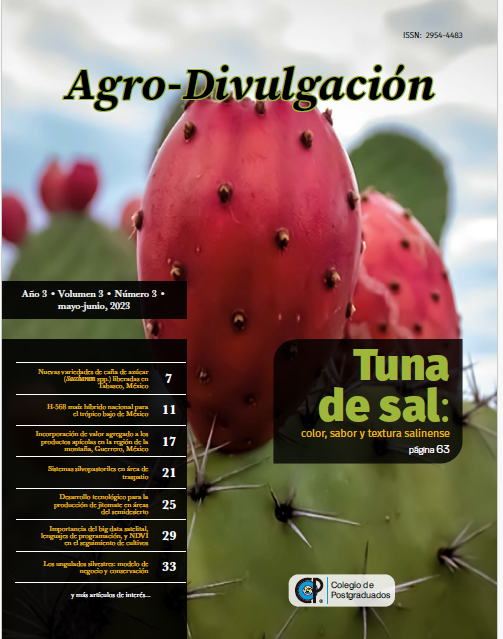H-568 maíz híbrido nacional para el trópico bajo de México
DOI:
https://doi.org/10.54767/ad.v3i3.185Keywords:
Zea mays L., Híbridos de maíz, Híbrido trilineal, Maíz mejoradoAbstract
In Mexico, the production of corn grain is of economic, social and cultural importance. Its production is carried out in 51.3% of the national surface that is destined to cyclical crops, in this surface hybrid and native corn seeds are used. Hybrid corn seeds are offered by transnational private companies in 90.0% or more, which generates a risky dependence on these companies, the remaining 10.0% is produced by national seed companies and public institutions. This paper presents information for the dissemination of the H-568 maize variety, released to trade by the National Institute of Forestry, Agriculture and Livestock Research. This trilineal hybrid has an intermediate-tall size (plant height of 270 to 280 cm), a biological cycle of 125 to 130 days, male flowering at 58 days and female flowering two days later. Its ears are cylindrical with a length of 14 to 18 rows and 31 to 40 grains per row. The beans are creamy white in color and have a jagged texture. Grain yields recorded for the H-568 have been from 5.6 to 9.5 tons per hectare; however, its experimental yield potential is greater than 11.0 tons per hectare. H-568 maize is recommended for planting in the low tropical regions of the states of Guerrero, Michoacán, Oaxaca, Chiapas, Morelos, Veracruz and Tamaulipas.









